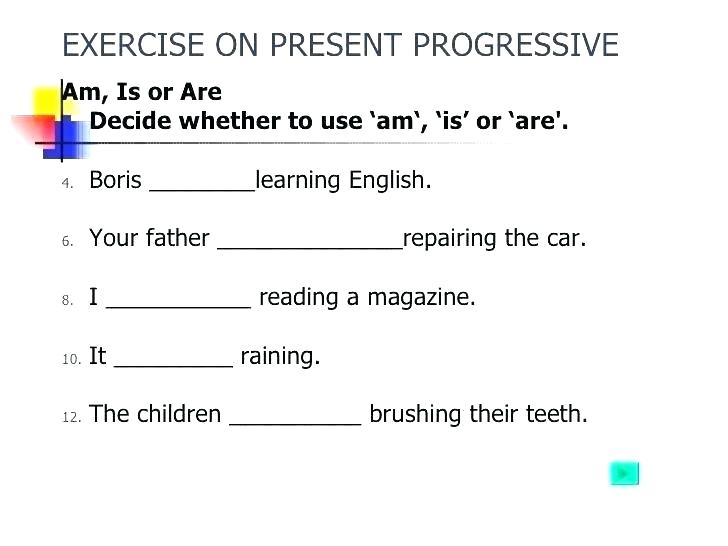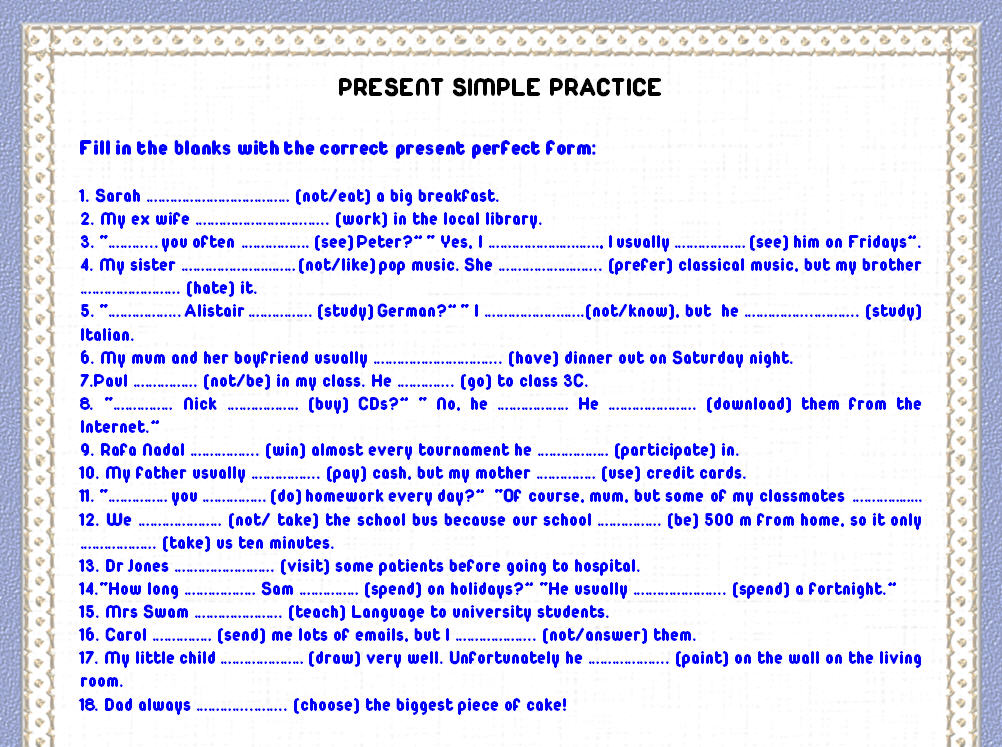Hello! Let's learn about two important tenses: Present Simple and Present Progressive.
Think of them as two ways to describe actions.
Present Simple: The Habitual You
Imagine a clock ticking regularly. That's Present Simple.
We use it for things that happen regularly, always, or generally.
It's for habits, routines, and facts.
Example: I eat breakfast every morning.
See? It's a regular thing. Like the sun rising.
Here's a visual: Think of a calendar. Each day you mark "brush teeth." That's a habit, a Present Simple action.
Key words
Look for these words: always, usually, often, sometimes, rarely, never, every day/week/month/year, on Mondays/Tuesdays, etc.
Example: She usually drinks coffee in the afternoon.
Form
For I, you, we, and they, use the base form of the verb.
Example: They play football on Sundays.
For he, she, and it, add "-s" or "-es" to the verb.
Example: He plays the guitar.
Imagine "he," "she," and "it" are picky eaters. They need that extra "-s" on their verbs!
Negative and Questions
Use do not (don't) or does not (doesn't) to make negative sentences.
Example: I don't like spicy food.
Example: She doesn't speak Spanish.
Use do or does to ask questions.
Example: Do you like pizza?
Example: Does he work here?
Present Progressive: The Action Happening NOW!
Now, imagine a movie playing. It's happening right now. That's Present Progressive.
We use it for actions happening at the moment of speaking.
It's for things that are temporary and not habitual.
Example: I am eating lunch right now.
See? I'm doing it now. Not every day, just now.
Here's a visual: Think of a snapshot. It captures a moment in time. That's a Present Progressive action.
Key words
Look for these words: now, at the moment, currently, today, these days, right now, listen!, look!.
Example: She is studying for her exam at the moment.
Form
Use am, is, or are (the verb to be) + the verb with "-ing".
Example: I am reading a book.
Example: He is playing video games.
Example: They are watching a movie.
Think of "-ing" as the "action signal." It tells you the action is happening now!
Negative and Questions
Add not after am, is, or are to make negative sentences.
Example: I am not watching TV.
Switch the order of am, is, or are and the subject to ask questions.
Example: Are you listening?
Compare and Contrast
Think of Present Simple as a general statement. Present Progressive is a specific moment.
Present Simple: I drink coffee every morning. (Habit)
Present Progressive: I am drinking coffee right now. (Action happening now)
Think of Present Simple as the big picture. Present Progressive is zooming in on a specific detail.
State Verbs
Some verbs, called state verbs, are usually NOT used in the Present Progressive. These verbs describe states, feelings, or opinions.
Examples: like, love, hate, know, believe, understand, see, hear, want, need.
Instead of saying "I am liking this movie," we say "I like this movie."
However, some state verbs can be used in the Present Progressive with a different meaning.
Example: I see a bird. (State verb, meaning "perceive with eyes")
Example: I am seeing my dentist tomorrow. (Action, meaning "visiting")
Putting it All Together
Now, let's practice! Imagine you're describing your day.
Present Simple: I wake up at 7:00 AM every day.
Present Progressive: Right now, I am writing this article.
See how they work together? The Present Simple describes your routine, while the Present Progressive describes what you're doing at this very moment.
Keep practicing, and you'll master these tenses in no time! Good luck!

